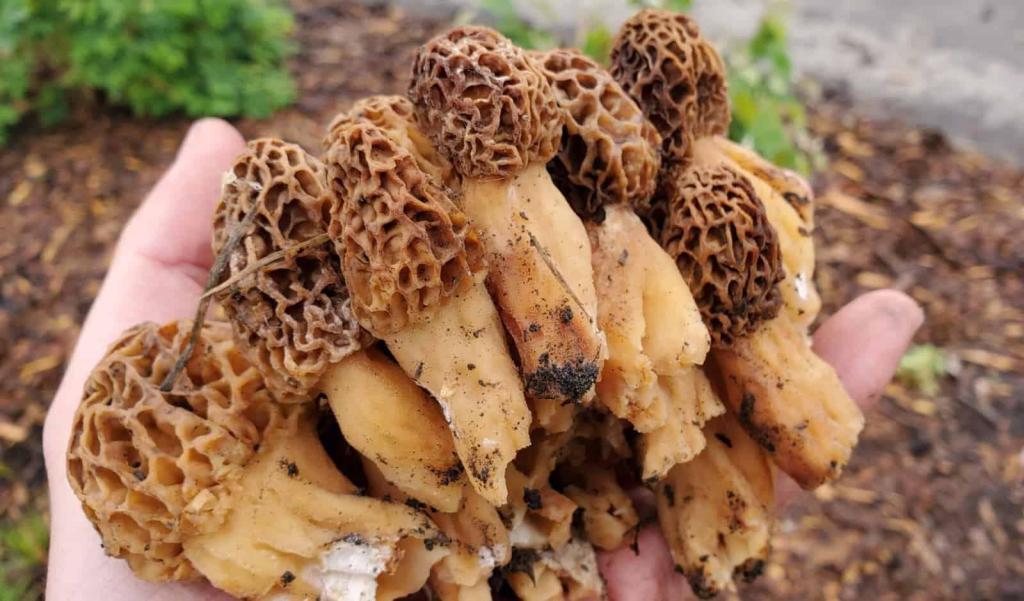Getting to know the nature—and mystery—of morels
Published 12:35 pm Friday, December 9, 2022

- Mushroom 2
“The more you know, the more you know you don’t know.”
– Aristotle (maybe)
Though Aristotle is usually given credit as the original author of that pithy adage about knowing, it’s uncertain whether he actually coined the saying. But that really doesn’t matter (or so I’d argue). What’s important is the idea itself.
The statement has resonated with me since I first heard it many years ago, and it makes absolute sense — especially to someone building a relationship with morel mushrooms.
Here’s another statement I like a lot: “I know enough to be dangerous.”
There’s a self-deprecating humility in those words. They are an admission that I know something about a subject, but what I know can get me into trouble if I take that knowledge too seriously.
Now in my sixth year as a dedicated morel hunter (Jan, my girlfriend, would substitute obsessive for dedicated), I have learned a fair bit about these wild, tasty, and mysterious mushrooms. But I am regularly reminded that my knowledge, though hard-won, is limited; and that some of what I think I know about morels may be incorrect. Or at least subject to revision.
For those unfamiliar with morels — as I was for the great majority of my life — it helps to know that, first, they are widely considered fungal delicacies, among the tastiest of wild, edible mushrooms; and second, they occur in two distinct circumstances.
The morels that get the most attention are those associated with large-scale “disturbance events” such as wildfires. For reasons that even mycologists don’t fully understand, forest fires sometimes produce huge quantities of morels the year following a fire. When the habitat is right, that is.
Whatever the cause, large burns may yield tons of morels, which is why they sometimes lure commercial pickers. The mushrooms may be present in huge numbers, and they’re easy to see in ashy soil, making them easy to harvest.
Unfortunately for burn-morel pickers, the bounty is short-lived. Even where it flourishes, large-scale fruiting occurs typically only during the first and second seasons following a fire. Why this is the case remains a mystery. Alaska pickers discovered this sad truth when the Kenai Peninsula’s Swan Lake Fire of 2019 produced enormous numbers of morels in 2020 but hardly any in 2021.
While I have picked — and been amazed by — burn morels in a couple of Alaska locales, I am most intrigued by, and drawn to, those members of the Morcellacae family that occur in undisturbed woodlands. In such places, the number of morels is relatively small, and, to the human eye, they seem to be randomly distributed. However, certain forest associations can help a morel hunter locate the mushrooms.
Here it helps to understand that morels, like other mushrooms, are the visible “fruiting bodies” (or simply “fruits”) of much larger fungal organisms that generally remain hidden while forming complex mycelial networks underground. And the process that produces mushrooms is called fruiting. Like much that happens in the fungal kingdom, exactly where the fruits appear and why remains largely unknown.
To me, that mystery is a big part of their appeal.
While their numbers may be small compared to burn morels, and their distribution apparently more helter-skelter, once you discover a patch of them in undisturbed woodlands, they’re likely to reoccur in that area year after year.
When dedicated morel hunters discover places that are reliably fruitful from one year to the next, they prefer to keep such knowledge to themselves, much like wild blueberry pickers do. Or anglers who prize their “secret” fishing holes.
The reason is simple. If word spread about a morel “hot spot” in undisturbed forest and large numbers of people came looking for the mushrooms, it would quickly be picked clean. As a result, the ground would likely be trampled, which would be harmful to the fungal network producing the fruits. Thus the rationale for secrecy, should you be so fortunate to find a productive morel patch.
So here’s the other thing that fascinates me about these mushrooms, which are characterized by conical, earth-toned caps that have honeycombed, “ridges-and-pits” textures: they have perfected the art of camouflage.
Particularly in mature, undisturbed northern forests, morels are known for their ability to hide in plain sight. In large part, that’s because they poke out of the ground in spring and early summer, when their earth-toned caps easily blend with brown and brittle leaves, dried spruce cones, and other forest debris.
Though some people might have a natural “eye” for these mushrooms, it seems to take dedicated practice for most mushroom hunters to more easily notice the presence of morels.
Over the past several years, thanks in part to dedicated hunting, it might be said that I have developed a “good eye” for morels. But there’s a part of me, informed by Alaska Native perspectives, which prefers the humbler notion that any success is more about the morels revealing themselves than any special abilities I might have.
This spring, like the previous five, I spent many hours in local woodlands searching for morels and finding my fair share. Yet, even on those days that weren’t particularly “fruitful,” I found myself being pulled into their world in what might be described as a kind of enchantment. From time to time, I thought I might be seeing patterns rather than a haphazard distribution of morels. But at other times, I felt completely baffled by what I found or didn’t find.
On at least a few occasions, I discovered clusters of morels in places I would never have imagined, given what I “know” (or imagine I know) about them. For instance, in the local woodlands where I hunt morels, I’ve usually found them most plentiful on hillsides with large cottonwood trees and patches of devil’s club, suggesting moist, well-drained slopes. But this spring, I discovered some in dry, rocky soil. Yes, cottonwoods were present, but they were small in size. And the ground was far too dry for devil’s club.
I also found morels earlier than ever before. And the fruiting ended earlier, too, at least where I hunted. This latter circumstance is almost certainly connected to the extended period of dry Anchorage-area weather that began in early April, followed by May and early June’s unusual heat wave. But why the early fruiting?
More clearly than before, I also noticed that clusters or patches of morels “moved around” from one season to the next on hillsides I consider reliable places to hunt. And sometimes morels seemed to occur in “bands.” Could that reflect the fruiting of roughly linear mycelial networks?
For me, the yearly hunt for morels has become less about the size of my harvest and the eating of the morels, and more about engaging with the fungal organisms and the mysteries that surround them. It seems I do enter something of a trance. And the search, with its moments of connection, is rewarding in and of itself.
Anchorage nature writer and wildlife/wilderness advocate Bill Sherwonit is a widely published essayist and the author of more than a dozen books, including “Living with Wildness: An Alaskan Odyssey” and “Animal Stories: Encounters with Alaska’s Wildlife.” Readers wishing to send comments or questions directly to Bill may do so at akgriz@hotmail.com.





